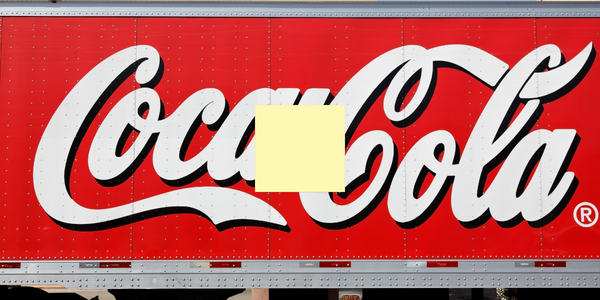下载PDF
HEINEKEN Uses the Cloud to Reach 10.5 Million Consumers

技术
- 基础设施即服务 (IaaS) - 云存储服务
适用行业
- 食品与饮料
适用功能
- 销售与市场营销
挑战
对于2012年的邦德促销活动,它计划在全球各地同时开展该活动。这给 HEINEKEN 带来了前所未有的挑战——尤其是在其技术运营方面。该活动的主要数字内容是一部 100 兆字节的电影,必须为全球数百万观众完美播放。毕竟,邦德从不失败。没有人会容忍可能会损害他的品牌的技术故障。此前,喜力在其外包数据中心支持数字媒体。但该数据中心缺乏 HEINEKEN 所需的计算资源,而构建它们——尤其是为了支持将达到数百万同时点击的峰值流量——既耗时又昂贵。它也无法提供喜力在全球范围内最小化延迟所需的地理范围。
客户
喜力
关于客户
喜力
解决方案
借助 Azure,HEINEKEN 不必投资管理服务器,因此他们可以专注于提供最成功的活动。为帮助开展成功的活动,该公司使用 Azure 内容交付网络向全球 1050 万消费者快速、可靠地提供数字内容。此外,为了满足 2013 年活动的要求,喜力将 Azure 的使用从一个数据中心扩大到四个——欧洲和亚洲各一个,美国两个——获得了地理冗余和低延迟。数据存储在 Azure 表存储中以进行异步更新。该存储由 10,000 个分区构成——最初是 10 个——以实现必要的可扩展性。 HEINEKEN 使用 Microsoft Visual Studio 2013 开发了该解决方案。该体系结构已使用 Visual Studio 负载测试集群进行测试,以生成负载并在不测试 Internet 的情况下测试应用程序。 Microsoft 服务顾问帮助开发和负载测试解决方案,并解决性能问题。
运营影响
数量效益
相关案例.

Case Study
The Kellogg Company
Kellogg keeps a close eye on its trade spend, analyzing large volumes of data and running complex simulations to predict which promotional activities will be the most effective. Kellogg needed to decrease the trade spend but its traditional relational database on premises could not keep up with the pace of demand.

Case Study
Energy Management System at Sugar Industry
The company wanted to use the information from the system to claim under the renewable energy certificate scheme. The benefit to the company under the renewable energy certificates is Rs 75 million a year. To enable the above, an end-to-end solution for load monitoring, consumption monitoring, online data monitoring, automatic meter data acquisition which can be exported to SAP and other applications is required.

Case Study
Coca Cola Swaziland Conco Case Study
Coco Cola Swaziland, South Africa would like to find a solution that would enable the following results: - Reduce energy consumption by 20% in one year. - Formulate a series of strategic initiatives that would enlist the commitment of corporate management and create employee awareness while helping meet departmental targets and investing in tools that assist with energy management. - Formulate a series of tactical initiatives that would optimize energy usage on the shop floor. These would include charging forklifts and running cold rooms only during off-peak periods, running the dust extractors only during working hours and basing lights and air-conditioning on someone’s presence. - Increase visibility into the factory and other processes. - Enable limited, non-intrusive control functions for certain processes.

Case Study
Temperature Monitoring for Restaurant Food Storage
When it came to implementing a solution, Mr. Nesbitt had an idea of what functionality that he wanted. Although not mandated by Health Canada, Mr. Nesbitt wanted to ensure quality control issues met the highest possible standards as part of his commitment to top-of-class food services. This wish list included an easy-to use temperature-monitoring system that could provide a visible display of the temperatures of all of his refrigerators and freezers, including historical information so that he could review the performance of his equipment. It also had to provide alert notification (but email alerts and SMS text message alerts) to alert key staff in the event that a cooling system was exceeding pre-set warning limits.

Case Study
Coca-Cola Refreshments, U.S.
Coca-Cola Refreshments owns and manages Coca-Cola branded refrigerators in retail establishments. Legacy systems were used to locate equipment information by logging onto multiple servers which took up to 8 hours to update information on 30-40 units. The company had no overall visibility into equipment status or maintenance history.

Case Study
Versiondog Comes for Coffee
“Well before it went live, we had worked out a clear plan for exactly how we were going to use the new versiondog versioning and data management software from AUVESY,” says Michael Mrugalla, who works in process automation at the Mainz plant. “We also had to think about what backups really meant for us. With all our field devices, control programs, drive systems, programming languages, file formats and software applications, we needed to know precisely what we have to back up in case a breakdown (e.g. a power outage) stops production. Because the whole point of making a backup is to be able to recover data quickly and easily when something goes wrong and continue working as if nothing had happened. But that means more than simply restarting production, it also means we need to be able to pick up where we left off with our ongoing process maintenance and optimisation.” It was particularly important to Nestlé that their backup strategy be built around a sin-gle continually active and universally appli-cable solution. And they wanted it to maintain a centralised backup of all the data necessary for both recovery and further development for all devices and all related projects (i.e. every piece of hardware and software). And the programs actually running on controllers need to correspond precisely with the data on the server. If not, the reason must be easily identifiable and the valid version always available to be reloaded onto the device.





